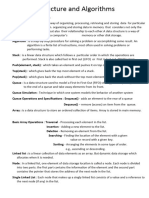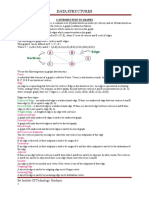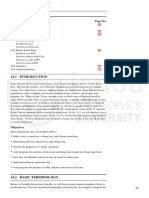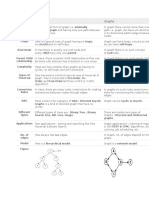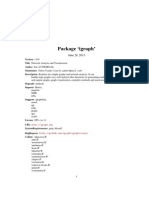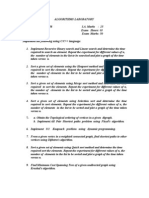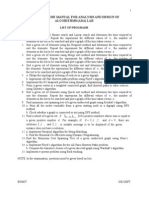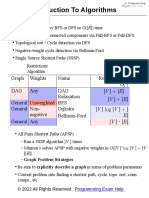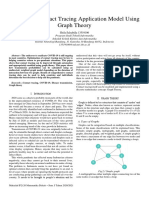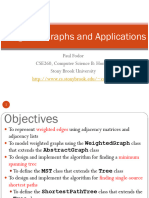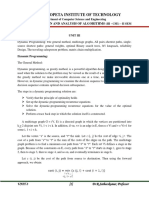0% found this document useful (0 votes)
33 views40 pagesData Structure PPT - Trees and Graphs
The document provides an overview of tree and graph data structures, detailing concepts such as binary trees, binary search trees, AVL trees, heaps, and various types of graphs. It covers their properties, implementations, traversals, and algorithms for operations like insertion, deletion, and finding shortest paths. Additionally, it explains graph representations and traversal techniques including Depth First Search (DFS) and Breadth First Search (BFS).
Uploaded by
gdrivee515Copyright
© © All Rights Reserved
We take content rights seriously. If you suspect this is your content, claim it here.
Available Formats
Download as PDF, TXT or read online on Scribd
0% found this document useful (0 votes)
33 views40 pagesData Structure PPT - Trees and Graphs
The document provides an overview of tree and graph data structures, detailing concepts such as binary trees, binary search trees, AVL trees, heaps, and various types of graphs. It covers their properties, implementations, traversals, and algorithms for operations like insertion, deletion, and finding shortest paths. Additionally, it explains graph representations and traversal techniques including Depth First Search (DFS) and Breadth First Search (BFS).
Uploaded by
gdrivee515Copyright
© © All Rights Reserved
We take content rights seriously. If you suspect this is your content, claim it here.
Available Formats
Download as PDF, TXT or read online on Scribd
/ 40









